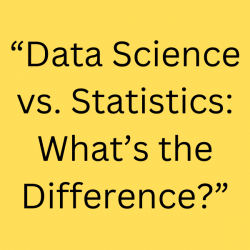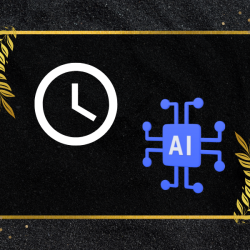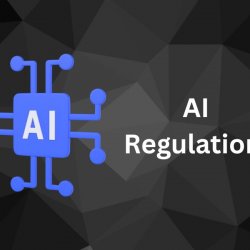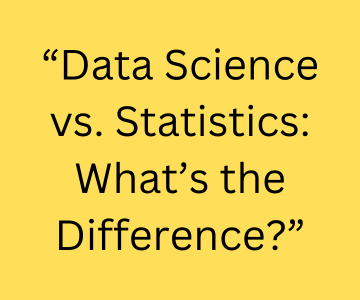10 Steps to Mastering the Art of Pandas AI


10 Steps to Mastering the Art of Pandas AI
Introduction to Pandas AI
If you are looking to master the art of data science with Pandas AI, look no further! This 10 step guide will provide you with the fundamentals and best practices to help you get started.
Step 1: Introduction to Pandas AI: Before we dive into the nitty gritty details, it’s important for you to understand the basics of artificial intelligence (AI). In its most basic sense, AI is a computer based system or machine that can think like a human. AI can be used in various applications from facial recognition and natural language processing to robotics and game playing.
Step 2: Learning the fundamentals: There are some key concepts that make up the cornerstone of AI. These include learning algorithms which allow machines to learn from past data, natural language processing which gives machines the ability to interpret and understand written language, cognitive systems which enable machines to think and take action as humans would, and neural networks which enable machines to process large sets of data.
Step 3: Exploring the Pandas library: Pandas is an open source library for Python that allows users to explore and manipulate datasets. Pandas makes it easy for users to load data into various formats such as CSVs or Excel files. It also provides tools for filtering, sorting, transforming, aggregating, summarizing data. Finally, it offers visualization tools such as matplotlib/seaborn for creating data visualizations or plots.
Step 4: Mastering Data manipulation: As a user who wants to utilize Pandas AI for their projects, it is important for them to master data manipulation with the pandas library first before attempting any other tasks related to AI models or algorithms. By exploring through pandas tutorials online. Data Science Course in Delhi
Data Structures & Types in Pandas AI
Data structures and data types are essential components of Pandas AI. Pandas AI is Python’s powerful, open source library for manipulating, analyzing, and visualizing data. Mastering the art of mastering this tool can help you gain insight into complex datasets and develop new data analysis methods. To get you on your way to becoming a master of Pandas AI, here are 10 steps to mastering the art.
- Understand Data Structures: A data structure is a collection of data organized in such a way that it can easily be accessed, queried, modified, and manipulated. With Pandas AI you have access to various structures like sets, lists Arrays, dictionaries & more. Having a good understanding of what each structure does will make using Pandas AI much easier.
- Familiarize Yourself with Data Types: Each piece of data in a given structure has its own type associated with it e.g text/string = string type; number = numerical type; etc.. It is important to understand the different types as they will be used in various operations throughout your coding journey with Pandas AI.
- Identify Your Data Indexes & Algorithms: During your data analysis journey you will need to identify indexes and algorithms while manipulating your data set. Using indexes & algorithms allows for faster access to required pieces of information or specific tasks within the code written with Pandas AI. Data Analyst Course in Delhi
- Choose Your Method (Series or Dataframes): Series and Dataframes are two ways to organize your dataset when programming with Pandas AI (others exist). Knowing which one to use depends on what kind of manipulation needs to be done on the given dataset e series is
Working with Series in Pandas AI
Pandas AI is a powerful tool for data analysis and manipulation. It’s popularity is due to its easy to use functions, clean syntax, and comprehensive capabilities. If you are utilizing Pandas AI for your data projects, you need to understand the basics of working with series in order to maximize this powerful tool. Here are 10 steps to mastering the art of working with series in Pandas AI:
- Series Creation You can create a series by using the pd.Series() function in Pandas AI and passing any kind of data object such as list, dict, ndarray(numpy array), or scalar value as a parameter. The index labels of the series will be set automatically and can be accessed using the .index attribute.
- Selection Methods Selection methods allow you to access randomly selected items from a pandas series, such as individual labels or particular slices of a series. You can do selection either by label name or position (with integers).
- Operations on Series – Use operations such as Add, Subtract, Multiply, Division and so on to perform mathematical calculations on a series which is then returned as a new series object where each item has been processed through the operations supplied.
- Indexing and Slicing – Indexing allows you access individual elements in the series while slicing returns ranges of size depending upon how many parameters you specify; simple indexing returns one item while slicing can return multiple items from different parts of the original series object depending on what was specified within the slice definition itself.
Using DataFrames in Pandas AI
DataFrames in Pandas are used to structure data and make it easier to manipulate. They provide a convenient interface for creating, loading, and manipulating data from different sources. When using DataFrames in Pandas AI, it’s important to understand how they are structured and what kind of operations can be performed with them.
The first step in mastering the art of DataFrames is understanding the structure of the data within them. This includes understanding how each column of data is related, as well as what type of data is being stored in each column. Once you have a good handle on the structure of your data, you will be able to more easily manipulate and work with it.
The second step is learning how to load and export data into and out of DataFrames. This includes knowledge on how to read from CSV files, Excel spreadsheets, and other databases that support this kind of operation. Being able to perform these operations quickly and efficiently is essential when working with large amounts of data or multiple sources at once.
The third step involves manipulating the data within DataFrames. Being able to sort columns by certain criteria or perform mathematical calculations on certain columns can help you find patterns or insights that might not be immediately obvious just by looking at the raw numbers. Additionally, mastering basic SQL operations like SELECT, INSERT, UPDATE can also aid in manipulating datasets efficiently within DataFrames in Pandas AI.
Selecting and Filtering Data in Pandas AI
Data selection is at the core of Pandas AI. At its core, it provides powerful tools for selecting specific pieces of data from series or DataFrames based on conditions. Using these methods, you can select rows and columns that match one or more criteria, extract specific values, and merge DataFrames together.
When it comes to filtering data in Pandas AI, there are several key techniques to master. One of the most common is using group by & aggregation methods. This involves grouping together pieces of data that share common characteristics (i.e., “grouping”) and then performing some type of statistical analysis (i.e., “aggregating”). This can be used for a variety of tasks such as counting how many items fall into each group or calculating averages across groups depending on what is needed for your data analysis. It’s easy to execute basic group by & aggregation techniques but can become more complex when filters are applied during the process.
Pandas AI also allows for powerful Series and DataFrames manipulation techniques where you can slice, split, join, filter, sort, aggregate etc.. By mastering these techniques you’ll be able to quickly access and manipulate any type of data stored within a series or DataFrame with ease.
Grouping and Sorting Operations with Panda AI
Pandas AI can be a powerful tool for data analysis and predictive modeling. But to unlock the full power of the Pandas AI library, it is important to understand its different components and how to apply them. This article is dedicated to providing you with 10 key steps to mastering the art of Pandas AI.
- GroupBy operations: GroupBy operations are a powerful tool that allows you to group your data by one or more criteria and aggregate it for further analysis. This can help you identify trends or differences between different groups and calculate statistics such as mean, min, max, count, etc.
- Aggregating Data: You can use the GroupBy method to aggregate data into different buckets or groupings depending on your needs. This is useful for categorizing data and creating meaningful insights from large datasets.
- Sorting Methods: Pandas allows you to sort data in various ways using sorting methods such as ascending() and descending(). These methods give you control over what order the data is displayed in, ensuring that you get the most out of your datasets.
- DataFrame manipulation: One of the most powerful parts of Pandas is its ability to manipulate DataFrames with ease. You can use this feature to add columns, remove columns, filter rows according to certain criteria and much more. Data Science Institute in Delhi
- Filtering with Boolean indexing: Boolean indexing allows you to filter out certain rows based on conditions you specify in a boolean statement (e.g., column values greater than 5). This makes it easier for you to find specific records in large datasets quickly and accurately without having to manually search through each row individually.
Handling Missing Values with Panda AI
- Identify Missing Values: The first step is identifying any missing values within your dataset. For example, you may need to look for placeholder characters such as NULL or blank spaces which signify a lack of value. Once you have identified any potential missing values, you can move onto step two.
- Replace or Drop Values: After you have identified your missing data, it’s time to decide what action you want to take with them either replace the value with another or drop it entirely from your dataset. This is an important decision as it will directly impact both the accuracy and integrity of your work going forward.
- Impute Missing Data: A process known as imputation can be used when replacing or dropping values isn’t an appropriate solution. This involves constructing an algorithm that is used to guess a likely value based on statistical analysis from other data points within the dataset.
- Filling Methods: There are several different filing methods that can be used when imputing missing data in pandas AI such as forward filling and backward filling which fill in gaps between sequential data points. Alternatively, interpolation techniques including linear and cubic interpolations can also help provide a more accurate prediction in cases where the data points are widely spaced apart from each other than those where they are adjacent within the dataset.
Manipulating DateTime values in Panda AI Takeaway : Summarizing 10 Steps to Mastering the Art of Panda’sAI
The power of Panda’s AI for data exploration and manipulation is incomparable. It can be used as an incredible tool to wrangle, clean and analyze data. Manipulating DateTime values with Pandas AI is one such task that when mastered, can give you a cutting edge in your data analysis workflow. Here are 10 steps to mastering the art of Panda’s AI for DateTime manipulation:
- Get Familiar with Data Exploration Techniques: Before attempting to manipulate DateTime values, it is important to first get a fundamental understanding of the techniques used for data exploration. Using basic commands such as ‘head’ and ‘tail’ can provide valuable insight into the structure of your dataset and help you identify any potential issues that may arise during the manipulation process.
- Use Conversion Functions: When dealing with DateTime data, it is important to use conversion functions that will convert text strings in the specified format into Python date or datetime objects as Panda’s AI works best with these two formats. An example would be .to_datetime which identifies and converts a provided string into a valid datetime object automatically.
- Extract Time Features: One of the most powerful features of Pandas AI for manipulating DateTime values is its ability to extract time features like hour, minutes, days, etc from a given object or string into separate columns in your dataset for further exploration and analysis.
- Work With Timezones: Another useful technique is being able to work with time zones and make accurate calculations between different zones across regions or countries while working with global datasets containing DateTime values from multiple locations.






Ingen kommentarer endnu